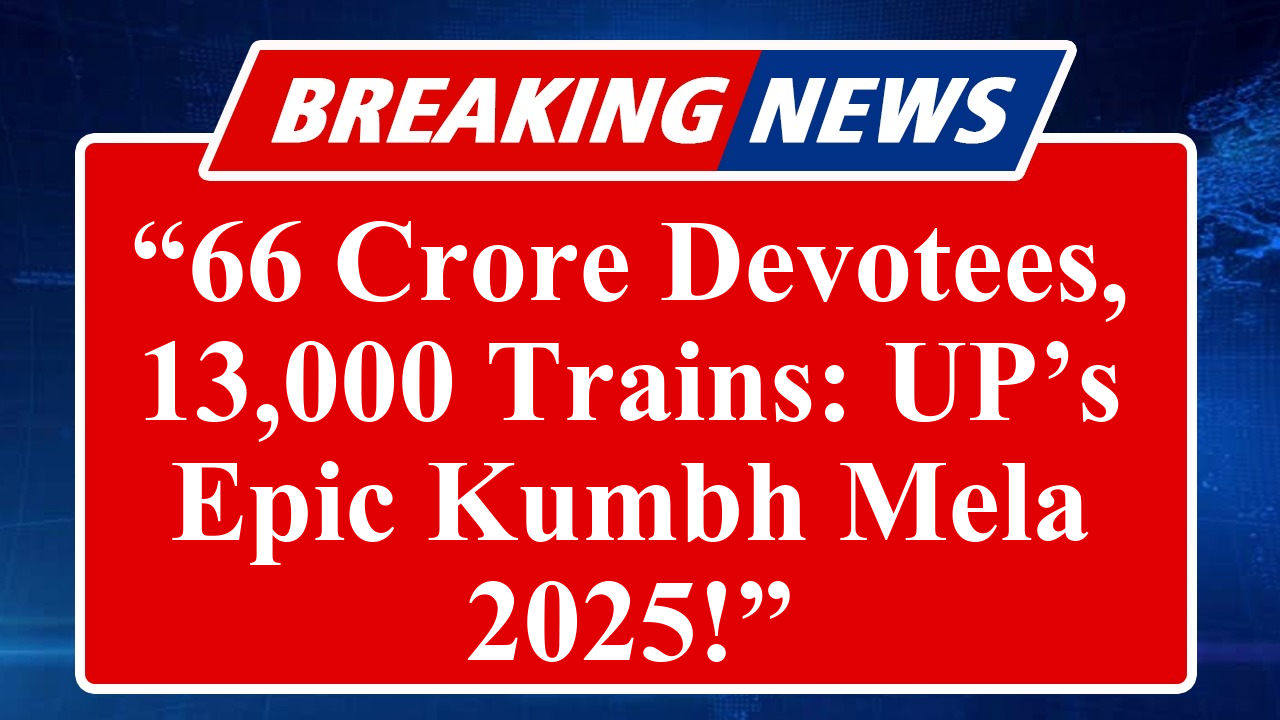Over 66 crore devotees attended the Maha Kumbh Mela 2025 in Prayagraj, with Uttar Pradesh’s extensive preparations ensuring safety and comfort. The state deployed 40,000 police, 2,300 CCTV cameras, and 150,000 toilets, while Indian Railways ran 13,000 trains. Despite a tragic stampede, advanced technology and infrastructure made the event a global spectacle.
UP’s Grand Preparations for Maha Kumbh Mela 2025
The Maha Kumbh Mela 2025, held in Prayagraj, Uttar Pradesh, from January 13 to February 26, concluded as the world’s largest religious gathering, drawing over 66 crore devotees to the Triveni Sangam, the sacred confluence of the Ganga, Yamuna, and mythical Saraswati rivers. The Uttar Pradesh government, under Chief Minister Yogi Adityanath, orchestrated unprecedented preparations to ensure a seamless, safe, and spiritually enriching experience for millions of pilgrims, saints, and tourists.
The state allocated ₹2,500 crore for infrastructure development, a significant increase from ₹621.55 crore in 2022-23, to transform Prayagraj into a sprawling 40-square-kilometer temporary city divided into 25 sectors. This included 180,000 tents for accommodation, ranging from basic dormitories to deluxe setups by the Uttar Pradesh State Tourism Development Corporation (UPSTDC), with a 300-bed deluxe dormitory catering to premium visitors. The Mela area, expanded by 800 hectares compared to 2019, featured roads, electricity, water supply, and communication towers to support the massive influx.
Sanitation was a priority, with 150,000 temporary toilets and urinals installed, monitored by a dedicated system to maintain hygiene. Approximately 10,000 sanitation workers, including 500 Ganga Praharis, ensured cleanliness, with one cleaner assigned per ten toilets. However, water quality concerns arose when the Central Pollution Control Board (CPCB) initially reported the Sangam waters unfit for bathing, only to later clarify that water quality varied by location and was generally suitable.
Security arrangements were robust, with 40,000 police personnel, supported by the Uttar Pradesh Provincial Armed Constabulary, National Disaster Response Force, and Central Armed Police Forces. Surveillance was enhanced by 2,750 CCTV cameras and underwater drones capable of diving 100 meters for recovery operations. The Integrated Command and Control Centre (ICCC) played a pivotal role in crowd management, crime prevention, and cleanliness monitoring, earning praise from Uttar Pradesh DGP Prashant Kumar, who described the event as “grand, divine, digital, and secure.”
Transportation logistics were equally impressive. Indian Railways operated over 13,000 trains, including 3,000 special services, to ferry pilgrims, though overcrowding led to vandalism at stations in Bihar. Prayagraj Airport facilitated daily flights from major cities, easing access. The Uttar Pradesh Fire and Emergency Services deployed 351 firefighting vehicles, 2,000 personnel, and four articulating water towers to handle emergencies.
The Mela featured six auspicious bathing days, including three Shahi Snans (royal baths) on January 14 (Makar Sankranti), January 29 (Mauni Amavasya), and February 3 (Basant Panchami), culminating on February 26 with Maha Shivratri. Over 3.5 crore devotees bathed on the first Amrit Snan, led by Naga Sadhus and various Akharas like Juna, Mahanirvani, and Niranjani. Despite dense fog and cold, the spiritual fervor remained undeterred.
High-profile visits, including Prime Minister Narendra Modi’s dip at the Sangam on February 5 and Bhutan’s King Jigme Khesar Namgyel Wangchuck’s participation on February 4, underscored the event’s global significance. Cultural highlights included 20 stages hosting folk dances from across India, a 2,000-drone show depicting the Samudra Manthan, and a viral skydiving event by Anamika Sharma, who unfurled the Mahakumbh flag at 13,000 feet in Bangkok.
Tragically, a stampede in January resulted in at least 50 deaths and 100 injuries, prompting a judicial inquiry led by Justice Harsh Kumar. Media reports suggested a higher toll, raising concerns about transparency. Despite this, the administration’s efforts, including ten lost-and-found centers reuniting over 250 people on the first day, were widely appreciated.
The Maha Kumbh’s success has set a benchmark for future events, with Maharashtra studying its security and traffic strategies for the 2027 Nashik Kumbh. The event’s economic impact was significant, with Chief Minister Adityanath estimating earnings of ₹2 lakh crore, and Prayagraj hotels reporting a 30% profit surge.
Disclaimer: This article is based on reports and updates from official sources, including the Uttar Pradesh government, news outlets like The Hindu, Hindustan Times, and Wikipedia, as well as posts on X. Information regarding the stampede and water quality is subject to ongoing investigations and should be treated as inconclusive until officially confirmed.

